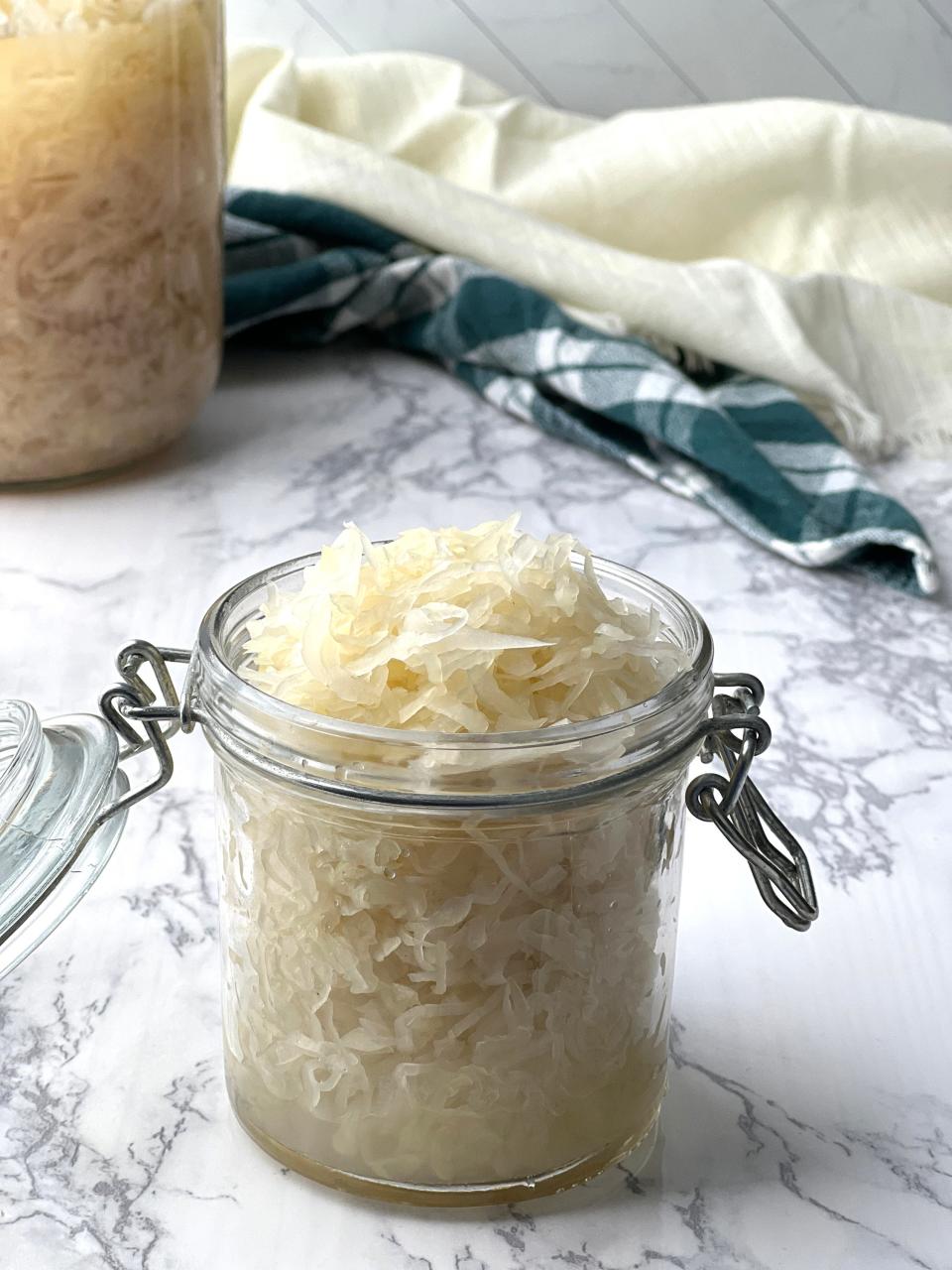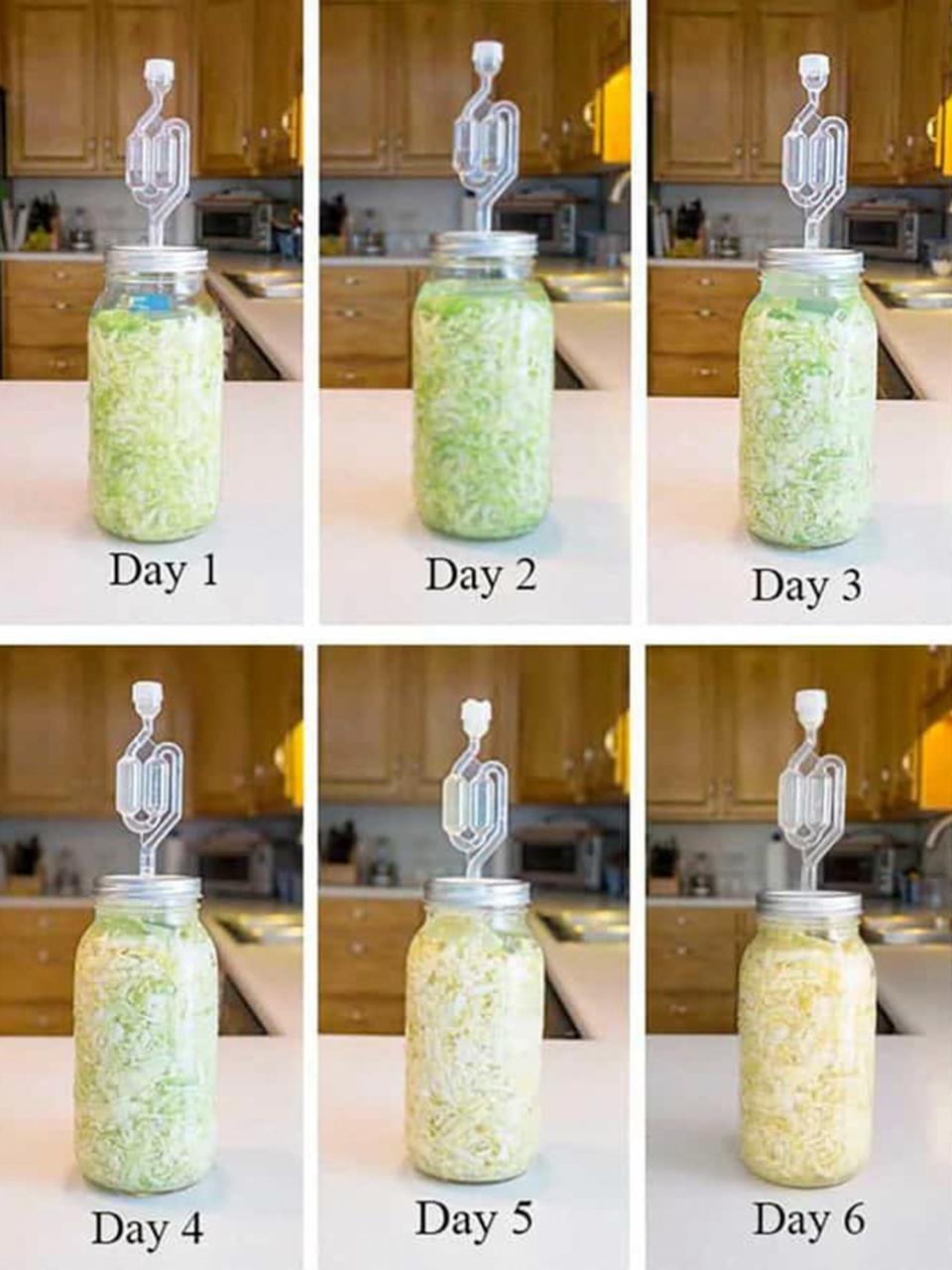A Stroll Through the Garden: The benefits of turning cabbage into sauerkraut
A friend and a reader of mine asked me about sauerkraut recipes a few years ago. This is a good time of year for harvesting cabbage since I picked a few of them up last week. Personally, I have not thought of cabbage as all that exciting, except picture coleslaw, fried chicken hot out off the grill, mashed potatoes with gravy that melts in your mouth, German mustard potato salad with a little bite, hot corn bread with real butter melting all over the top the corn bread, small pieces of grilled corn on the cob that has that sweetness that a perfect cob has, and finally the most amazing apple pie made by another friend whom I miss since she passed just this year. Her pie was auctioned off and brought in over $50 once.
Seriously, I could stop right here after this word picture and say that I’m full and have no need of saying anything else, but you need all the parts to have a perfect meal. Since I wrote this article, I would strongly endorse making your own sauerkraut for your lower intestine health and restoring a healthy microbiome that you actually need.
The problem is that I have also been informed that, when you make this highly nutritious food into a preserved food and it becomes pickled as sauerkraut, it becomes a "superfood." Cabbage by itself is high in vitamins A & C, which lowers cholesterol, provides phytonutrient antioxidants, and there are some medical studies pointing to the fact that sauerkraut may reduce the chances of cancer from a study done in 2002 by Finnish researchers pointing to isothiocyanates. Homemade sauerkraut has many beneficial live bacteria, which will aid in digestion. There is enough of a health boost containing probiotic beneficial bacterial organisms in a single serving of sauerkraut as in an expensive probiotic health drink, which I do take regularly, because I feel better.
The builders of the Great Wall of China used a version of pickled cabbage like kimchi 2,000 years ago. Stomach infections were reduced in the ranks of the Roman army as they would travel because of the barrels of sauerkraut. Many British sailors died from scurvy in the early 1700s. But in the late 1770s Captain James Cook brought 60 barrels of sauerkraut on his voyage and didn’t have any problems with scurvy in the ranks.

A sauerkraut recipe
Here is a simple recipe using 25 pounds of cabbage, ¾ cup of pickling salt, 1 large crock, cheese cloth, and a sawed-off baseball bat.
First remove the hard leaves and quarter the cabbage and cut into thickness of a dime. Mix shreds of cabbage and salt and let stand for several minutes. Pack the shredded cabbage and salt mix firmly into the crock with the partial baseball bat; the cabbage comes to the surface and fills to within 3 to 4 inches from the top of the rim. Cover the crock with the cheese cloth or other white fabric and tuck into the edges against the side of the container. You cannot let the cabbage exposed to the air, so you need to fit some waxed paper board that just fits inside the container so that the lid can move as it ages. Weight down the lid of the crock making sure that the lid can move but stay on top of the cabbage. From 68 to 72 degrees gas bubbles will form indicating fermentation. For five to six weeks this fermentation will take place. You need to keep the brine over the cabbage as it ferments so you may need to adjust the water as it ferments by removing or adding a little water. Remove the scum as you go along. This makes 8 quarts of sauerkraut, which can be hot packed, raw packed or frozen. Finally, this kraut needs to be tightly sealed.

Have a nice stroll in your garden this week. If you have some questions from things going on in your garden, do not hesitate to e-mail me at ericlarson546@yahoo.com. If you want to discuss anything in my columns, you can find links to my blogs at ohealthyfoodcoop.org. Thank you for all of your questions.
Eric Larson of Jeromesville is a veteran landscaper and gardening enthusiast and a founding board member of the Ohio Chapter of Association of Professional Landscape Designers. He encourages your gardening questions by sending an email to ewlarson546@yahoo.com.
This article originally appeared on Mansfield News Journal: The health benefits from making sauerkraut from your garden cabbage

